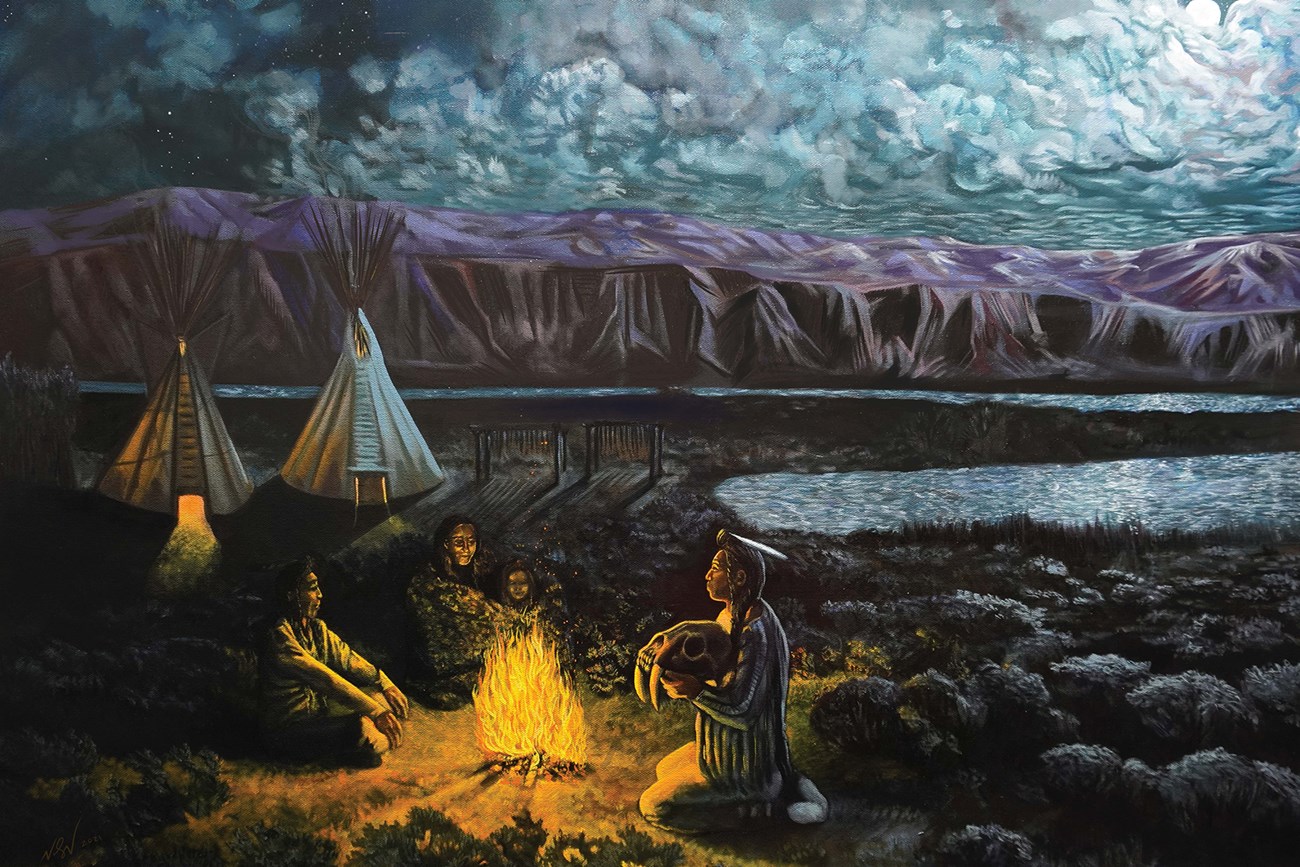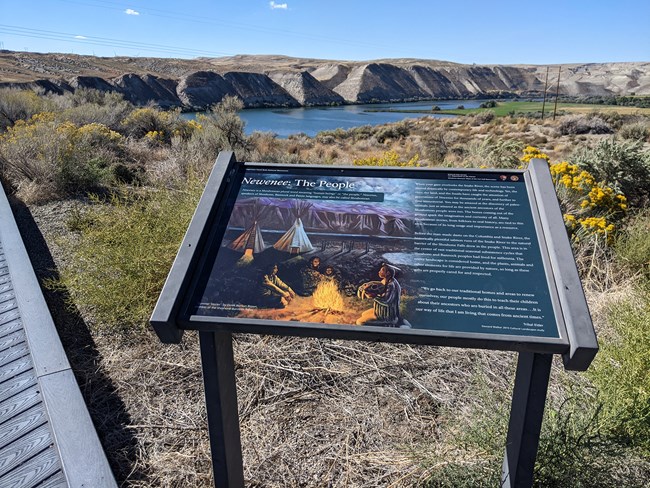Last updated: November 8, 2023
Article
Newenee: The Shoshonean Peoples of Southern Idaho

Painting by Derek No-Sun Brown, a member of the Shoshone-Bannock tribes.
Learn more on the Shoshone-Bannock Tribes' Official Website
Welcome From the Shoshone-Bannock Tribes
The Shoshone, Bannock, and Paiute peoples’ rich heritage spans the valleys, rivers, streams, steppes, lava fields, deserts, and mountains of Idaho. Understand that the homelands of our people reach from the tallest peaks to the deepest canyons, and beyond any state borders. These lands and waters we hold sacred. The original resources here once sustained salmon beyond count as well as us, the Newenee, our word meaning “the people.” Newenee, speakers of Shoshone, Bannock and Paiute languages, may also be called Shoshonean. Only a few generations ago, many of our ancestors lived here in the Hagerman area on the Bia Ogwaide (“big river,” as Shoshone speakers say, or “Snake River.”) We were forcefully removed, settled on reservations, and involuntarily we adapted to different ways of life. Yet, our history and interaction with our original territories did not stop there, but continues to this present day. Now, together with you, the new visitor, our history continues. The Shoshone-Bannock Tribes cordially welcome you here, and wish you will join us in appreciation and protection of these lands for the future of all.

Newenee: The People
Newenee is a Shoshonean plural word meaning “human beings” or “the people.” Newenee, speakers of Shoshone, Bannock and Paiute languages, may also be called Shoshonean.
When your gaze overlooks the Snake River, the scene has been altered drastically by contemporary life and technology. Yet, the river, the land, and the fossils have caught the attention of generations of Newenee for thousands of years, and further to time immemorial. You may be amazed at the discovery of paleo-animals, just as amazed as the ancient ancestors of the Shoshonean people were too. The bones coming out of the ground spark the imagination and curiosity of all. Many Shoshonean stories, from folklore to oral history, are tied to this area, because of its long usage and importance as a resource.
Before the man-made dams on the Columbia and Snake River, the historically plentiful salmon runs of the Snake River to the natural barrier of the Shoshone Falls drew in the people. This area is in the center of vast traditional seasonal subsistence cycles that Shoshone and Bannock peoples had lived for millennia. The entire landscape is considered home, and the plants, animals and other elements for life are provided by nature, so long as these gifts are properly cared for and respected.
“We go back to our traditional homes and areas to renew ourselves; our people mostly do this to teach their children about their ancestors who are buried in all these areas…It is our way of life that I am living that comes from ancient times.”
Tribal Elder
Deward Walker 2015 Cultural Landscapes study
